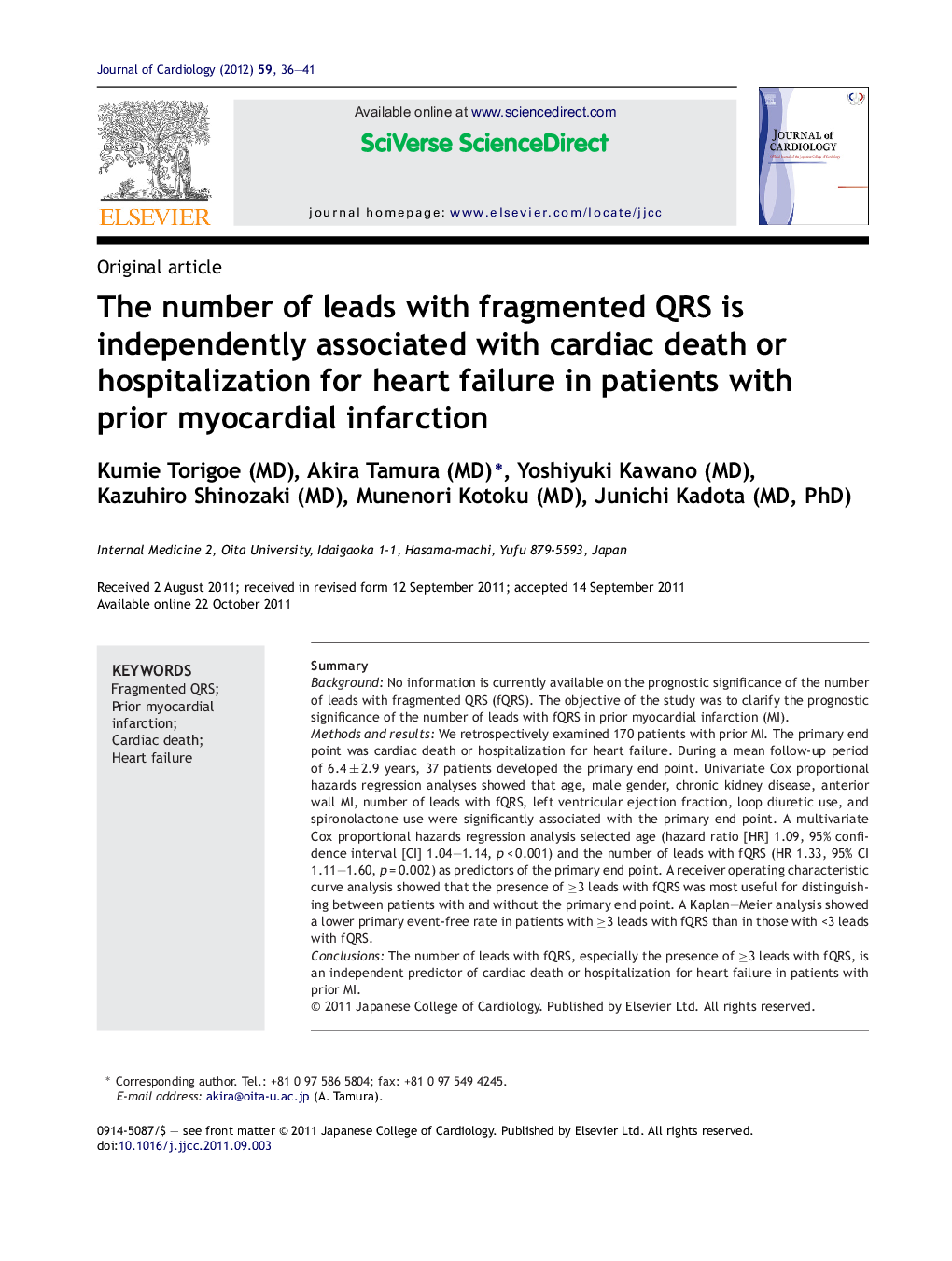| Article ID | Journal | Published Year | Pages | File Type |
|---|---|---|---|---|
| 2963166 | Journal of Cardiology | 2012 | 6 Pages |
SummaryBackgroundNo information is currently available on the prognostic significance of the number of leads with fragmented QRS (fQRS). The objective of the study was to clarify the prognostic significance of the number of leads with fQRS in prior myocardial infarction (MI).Methods and resultsWe retrospectively examined 170 patients with prior MI. The primary end point was cardiac death or hospitalization for heart failure. During a mean follow-up period of 6.4 ± 2.9 years, 37 patients developed the primary end point. Univariate Cox proportional hazards regression analyses showed that age, male gender, chronic kidney disease, anterior wall MI, number of leads with fQRS, left ventricular ejection fraction, loop diuretic use, and spironolactone use were significantly associated with the primary end point. A multivariate Cox proportional hazards regression analysis selected age (hazard ratio [HR] 1.09, 95% confidence interval [CI] 1.04–1.14, p < 0.001) and the number of leads with fQRS (HR 1.33, 95% CI 1.11–1.60, p = 0.002) as predictors of the primary end point. A receiver operating characteristic curve analysis showed that the presence of ≥3 leads with fQRS was most useful for distinguishing between patients with and without the primary end point. A Kaplan–Meier analysis showed a lower primary event-free rate in patients with ≥3 leads with fQRS than in those with <3 leads with fQRS.ConclusionsThe number of leads with fQRS, especially the presence of ≥3 leads with fQRS, is an independent predictor of cardiac death or hospitalization for heart failure in patients with prior MI.
